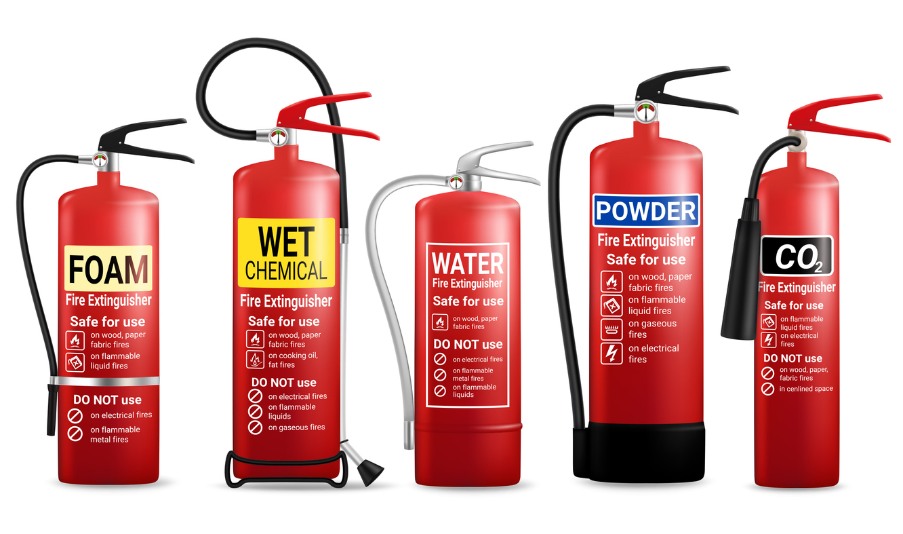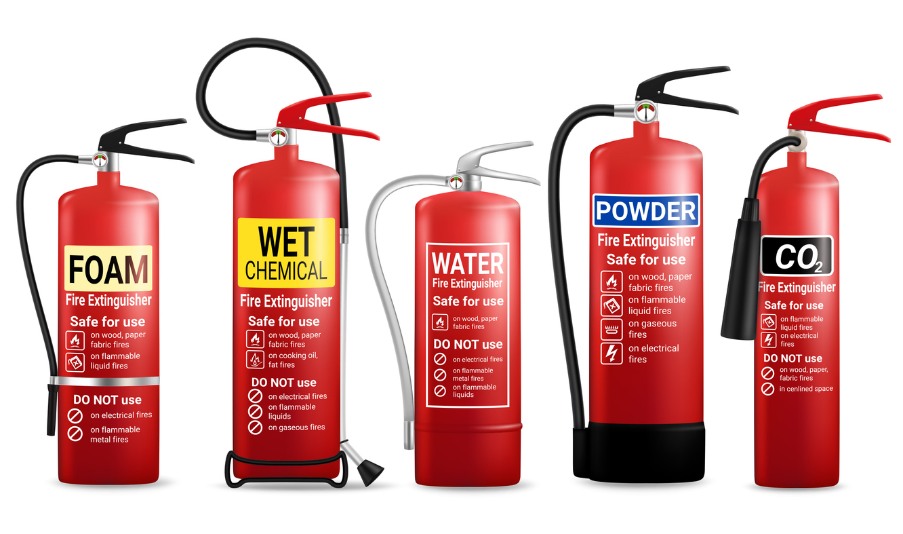Blog - 26/04/2025
Fire Extinguisher Colours, Do we Really Know What They Mean


Blog by wayne
26 April,2025
Most of us probably see fire extinguishers on a day to day basis at work or when out shopping or even on holiday but do we actually take any notice of them ? You may or may not know that while fire extinguishers are predominantly red they have different colour coding’s. Why is that you may wonder ? well the colour coding on a fire extinguisher tells you which type of fire it can and cannot be used on.
For example, while a water fire extinguisher is the perfect choice for putting out fires containing solid materials such as wood and paper, it must not be used on electrical fires. The reason for this is that because it is a good conductor of electricity it will put the user at risk of electrocution. In this blog post we are going to take a closer look at fire extinguisher colour codings, examine their meanings, the contents of the different types and what kind of fire they can safely be used on. Hopefully the information contained in this article will help you make the correct choice if you are ever unlucky enough to find yourself faced with a fire.


Different Types Of Fire
Before looking at the fire extinguishers themselves let’s look more closely at the different types and classes of fire. Fires come in six different classes all of which have their own particular characteristics which means they need to be dealt with differently.
The class of fire you are faced with will determine what type of extinguisher you need to use. We don’t need to tell you that caution should be exercised when dealing with any type of fire and having a clear understanding of what type of extinguisher can be used plays a vital role in putting them out safely and quickly.
The different types of fire are:
Class A: Combustible Material Fires – Combustible material fires are those containing solid flammable materials such as paper, fabrics, and wood.
Class B: Flammable Liquids – Flammable liquids include things like petrol, paint, alcohol, and white spirits.
Class C: Flammable Gases – Good examples of gas fires are those containing nitrogen and methane.
Class D: Combustible Metals and Chemicals – This type of fire involves metals and chemicals like potassium and magnesium.
Class F: Cooking Oil – This class of fire typically involves chip pans or deep fat fryers.
Electrical Fires – This is a fire involving all manner of electrical equipment including TVs, computers, portable heaters, or lighting.
What Are The Different Colour Codings?
As we mentioned earlier Fire extinguishers have five main colour codings which denote the type of fire they can safely be used on. So, let’s take a closer look at the contents of the different types of extinguisher where they are likely to be found, and the kinds of fire you should and shouldn’t use them on.
Red Fire Extinguishers
Red or water fire extinguishers are the ones you’ll see most often, they’re relatively common and great for tackling Class A fires (the kind that involve things like wood, paper, or cloth). So Red fire extinguishers are routinely found in offices, warehouses, shops, hospitals, and residential buildings that have multiple residents. Basically, anywhere there are solid materials that could catch fire, these extinguishers are a must-have, which is why people often buy them in bulk.
Just a heads-up though: don’t use water extinguishers on electrical fires, kitchen fires (like burning oil), or anything involving chemicals or gas. It can actually make things worse.
Blue Coded Powder Extinguishers
Fire extinguishers that have a blue coding contain a dry powder and are also referred to as ABC extinguishers as they can be safely utilised on class A,B and C class fires. You can also use them to put out smaller electrical fires that involve appliances of up to 100 volts.
This type of multi purpose extinguisher is extremely useful, however you should avoid using them in enclosed spaces as the powder could be inhaled by anyone nearby and the residue they leave is difficult to clean up. Blue coded fire extinguishers can often be seen on garage forecourts and anywhere welding or cutting equipment is being used.
Black Coded CO2 Fire Extinguishers
Black or CO2 fire extinguishers contain carbon dioxide and are primarily designed for use on electrical fires. For this reason they can usually be found in office complexes or anywhere else that has a large amount of electrical equipment. Many heavy goods vehicles and vans now carry CO2 fire extinguishers in their cabs as a matter of course to ensure they are well protected against the threat of fire. A word of warning though, you should never use a black coded extinguisher on chip pan fires, fires containing combustible materials or any flammable metals.
Cream Foam Fire Extinguishers
Cream fire extinguishers are ideal for tackling Class B fires, which are caused by flammable liquids like petrol or paint. They’re also safe to use on Class A fires (such as those involving paper, wood, or textiles), which makes them a versatile option. Because of this, they’re commonly found in the same places as water extinguishers, like offices, warehouses, shops, and homes.
However, it’s important to know that cream extinguishers should not be used on fires involving cooking oils or fats (Class F), burning metals (Class D), or electrical equipment, as this can be dangerous.
Yellow Coded Wet Chemical Fire Extinguishers
This type of fire extinguisher is made specifically for Class F fires, which involve cooking oils and fats, the kind you’d find in deep fryers. While it can be used on Class A fires (like paper or wood), water or foam extinguishers are generally more effective for those situations.
Yellow coded fire extinguishers are most common in commercial kitchens like those found in restaurants and workplace canteens along with fast food outlets like chip shops, so basically anywhere there’s a risk of cooking oil catching fire.
Yellow-labeled fire extinguishers should never be used on fires involving flammable liquids or gases, electrical equipment, or metals, as that could be dangerous.
FAQs
What Type of Extinguisher should You Use on an Electrical Fire
The smothering properties of carbon dioxide mean that a CO2 or black coded extinguisher is the best choice for an electrical fire.Because it is non conductive the residue left behind by a CO2 extinguisher will not cause any damage to the electrical equipment you use it on. Powder fire extinguishers are also safe to use on some electrical fires however be aware they are likely to leave a lot of mess and could possibly damage the equipment.
What is the best Type of Extinguisher for Flammable Liquids
You can safely use both foam( cream coded) or powder fire(blue coded extinguishers on class B flammable liquid fires which is the reason they are routinely found on the forecourts of petrol stations
What Fire Extinguisher For Oil?
Where petrol or oil is involved you should use either CO2(black coded), powder(blue), or foam(cream) extinguishers. However, when faced with a cooking oil fire then you should make sure you use a wet chemical or yellow coded extinguisher.
